Reflections of Japan at the turning point of modernity
Ukiyo-e and Shin hanga prints of the Paul Tavernier bequest
26 March to 9 June 2024
From March 26 to June 9, 2024, the Cernuschi Museum presents a selection of Japanese prints from the Jean and Yvonne Tavernier collection, bequeathed to the museum by their son, Paul.
This exhibition addresses the transition from the 19th to the 20th century through two major movements in Japanese printmaking, ukiyo-e and Shin hanga. The works, presented to the public for the first time, highlight the developments in this art, both aesthetically and technically.
Focus exposition
Temporary exhibition area of the Cernuschi museum
7 avenue Vélasquez, 75008 Paris
Free access
The Tavernier’s bequest
Jean and Yvonne Tavernier built their collection of Asian art, dedicated to graphic arts, between 1937 and 1946 while they lived in Shanghai. Their selection focuses on both Chinese paintings and Japanese prints, bringing together ancient and modern works in both cases. This exhibition thus remains faithful to the view of collectors by presenting two distinct ages of woodblock printing.
Following the donation of Chinese paintings in 2017 by Paul Tavernier, the bequest of Japanese prints will enrich the museum's collections in 2022. This bequest makes it possible to constitute, for the first time at the Cernuschi Museum, a fund of Shin hanga prints that brings together the main actors of this movement, such as Yoshida Hiroshi, Kawase Hasui and Ohara Koson.
Ukiyo-e: the present as a source of inspiration
The art of ukiyo-e prints (“images of the floating world”) was born in the Edo period (1603-1868), an economically prosperous and culturally flourishing period in Japanese history. It reflects the refined pleasures and entertainment of the urban bourgeoisie living in the capital, Edo, present-day Tōkyō. Inspired by everyday life and its most ephemeral aspects, these prints are produced and distributed massively.
The Tavernier collection demonstrates a taste for the masters of ukiyo-e prints from the end of the Edo period from the Utagawa School, such as Kunisada (1786-1865) or Kuniyoshi (1797-1861). This first exhibition room notably offers a selection of triptychs restored for this occasion.
This exhibition also combines works from the Tavernier bequest with albums of prints, very rarely exhibited due to their fragility, from Henri Cernuschi’s collection. The set presented explore sub-genres of ukiyo-e such as images of beautiful women (bijin-ga), caricatures (giga) or scenes inspired by the Tale of Genji (genji-e), famous 11th century novel recounting the romantic and political intrigues of Prince Genji, revisited in the Edo period by Ryūtei Tanehiko (1783-1842).
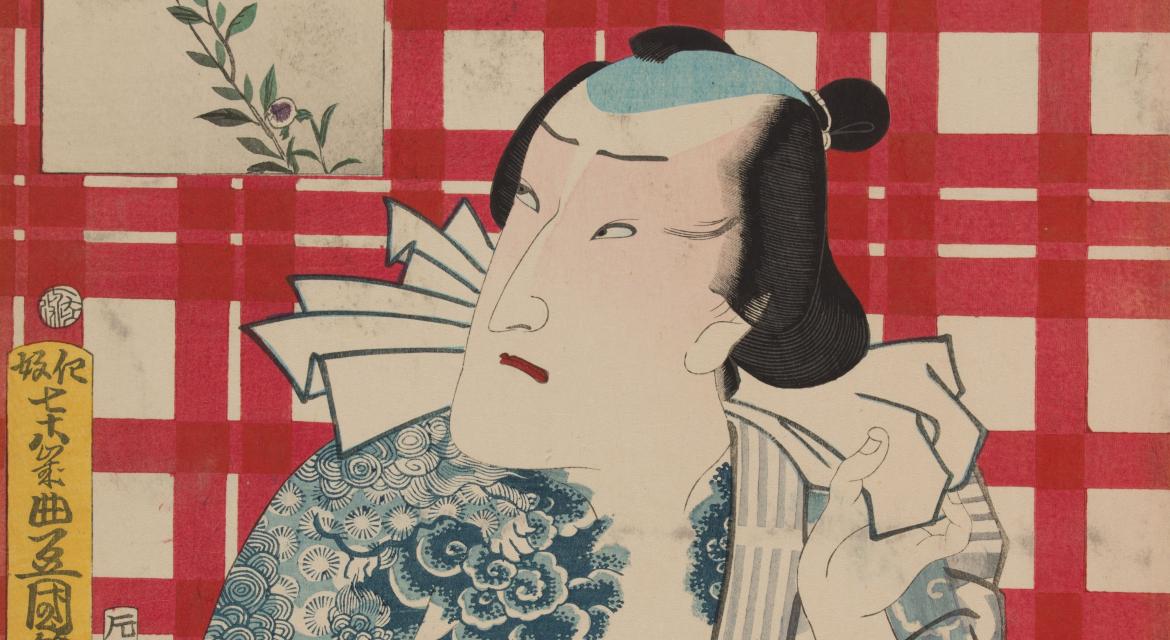
Polychrome woodblock print. 36,2 x 27,5 cm. M.C. 4766-06.
Henri Cernuschi bequest, 1896.
CCØ Paris Musées / Musée Cernuschi, musée des Arts de l’Asie de la Ville de Paris
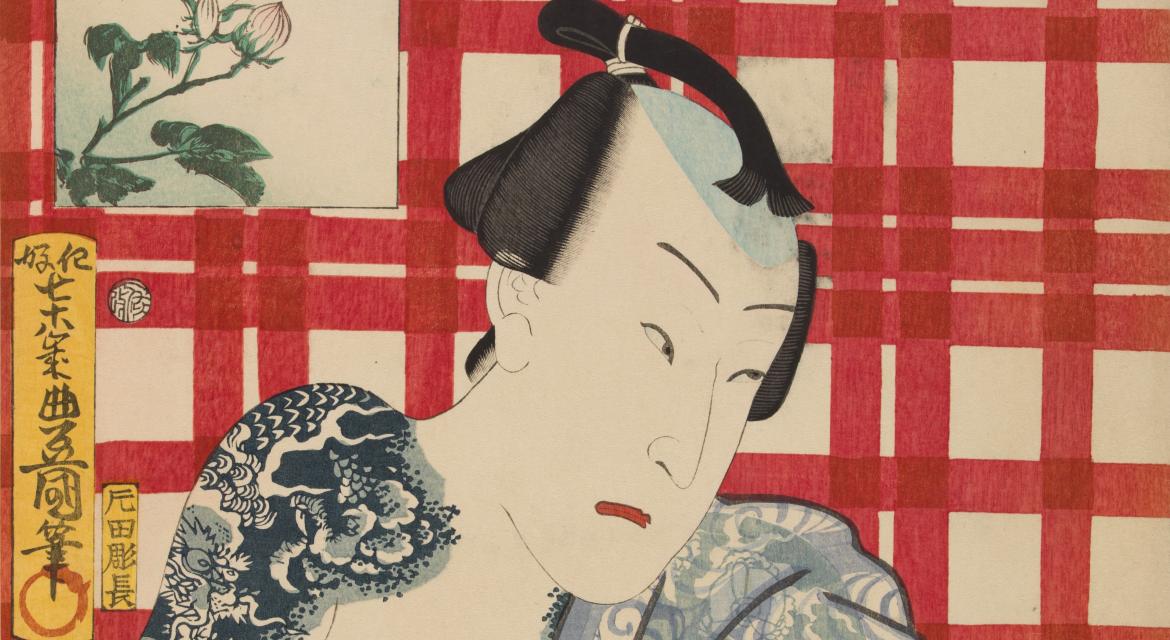
Polychrome woodblock print. 36,2 x 27,5 cm. M.C. 4766-04.
Henri Cernuschi bequest, 1896.
CCØ Paris Musées / Musée Cernuschi, musée des Arts de l’Asie de la Ville de Paris
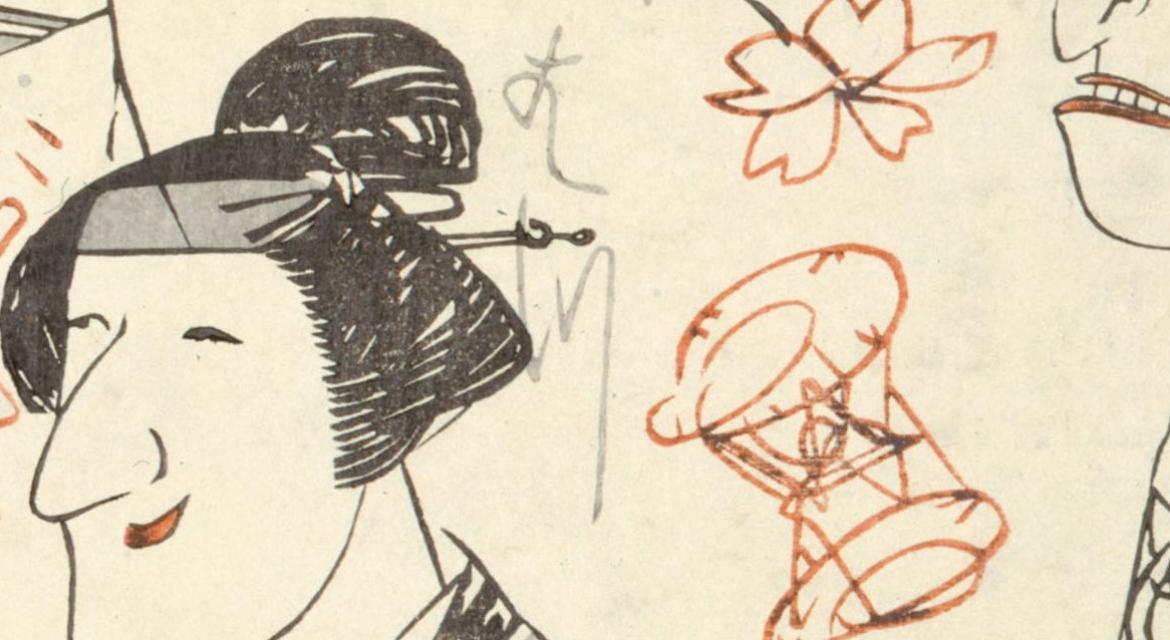
Polychrome woodblock print. 35,5 x 23,5 cm. M.C. 4767.
Henri Cernuschi bequest, 1896.
CCØ Paris Musées / Musée Cernuschi, musée des Arts de l’Asie de la Ville de Paris
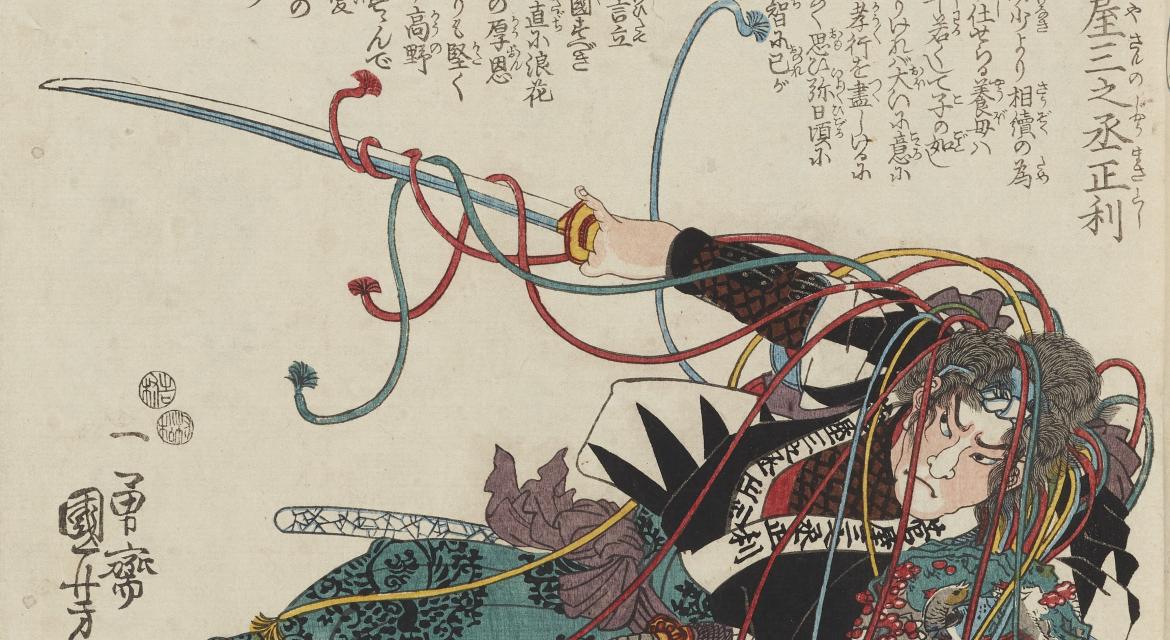
Polychrome woodblock print. 36,8 x 26,8 cm. M.C. 4777.
Henri Cernuschi bequest, 1896.
CCØ Paris Musées / Musée Cernuschi, musée des Arts de l’Asie de la Ville de Paris
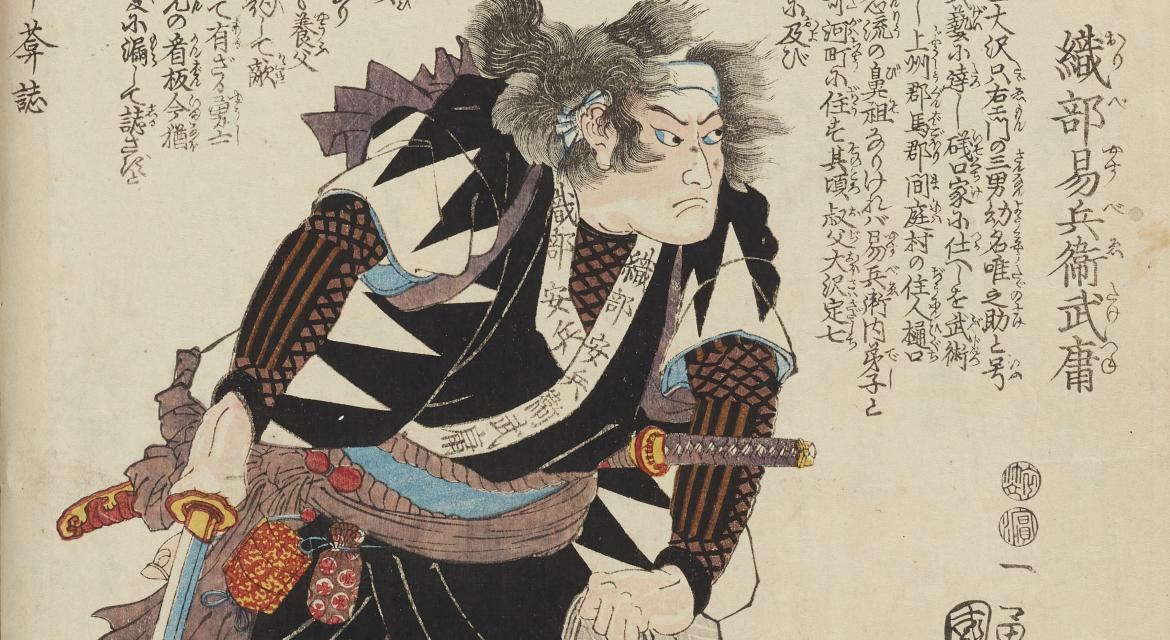
Polychrome woodblock print. 36,8 x 26,8 cm. M.C. 4777.
Henri Cernuschi bequest, 1896.
CCØ Paris Musées / Musée Cernuschi, musée des Arts de l’Asie de la Ville de Paris
The Shin hanga movement : the renaissance of Japanese printmaking
The Tavernier bequest is also rich in modern prints, which testify to the interest shown by the collectors in contemporary artistic productions. Although the art of printmaking experienced a relative decline during the Meiji era (1868-1912), it was reborn in the first half of the 20th century under the leadership of the publisher Watanabe Shōzaburō (1885-1962). The Shin hanga movement is characterized by both an improvement in printing techniques and a renewed aesthetic, adapting to both Japanese and Western tastes.
The selection of Shin hanga prints presented in this exhibition evokes two major themes of the movement, flowers and birds (kachō-ga) and landscapes (fūkei-ga).
Naturalist precision: prints of flowers and birds
The Shin hanga movement takes up the traditional theme of kachō-ga (“prints of flowers and birds”), paying particular attention to the precision of the representations. The details of the fauna and flora represented enable to appreciate the technical quality of the printing.
The productions of artists such as Ohara Koson (1877-1945), Itō Sōzan (born in 1884) and Ikeda Zuigetsu (1877-1944) bear witness to this dimension that is both naturalistic and sensitive.
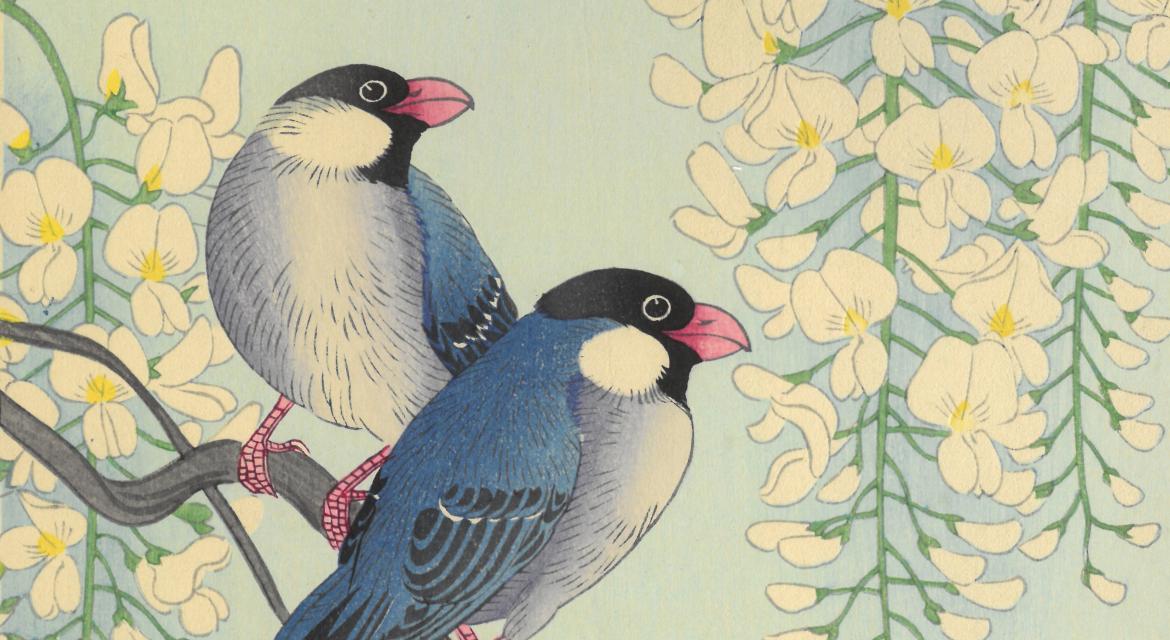
Polychrome woodblock print. 38,7 x 17,1 cm. M.C. 2022-97.
Paul Tavernier bequest, former Jean and Yvonne Tavernier Collection, 2022.
CCØ Paris Musées / Musée Cernuschi, musée des Arts de l’Asie de la Ville de Paris
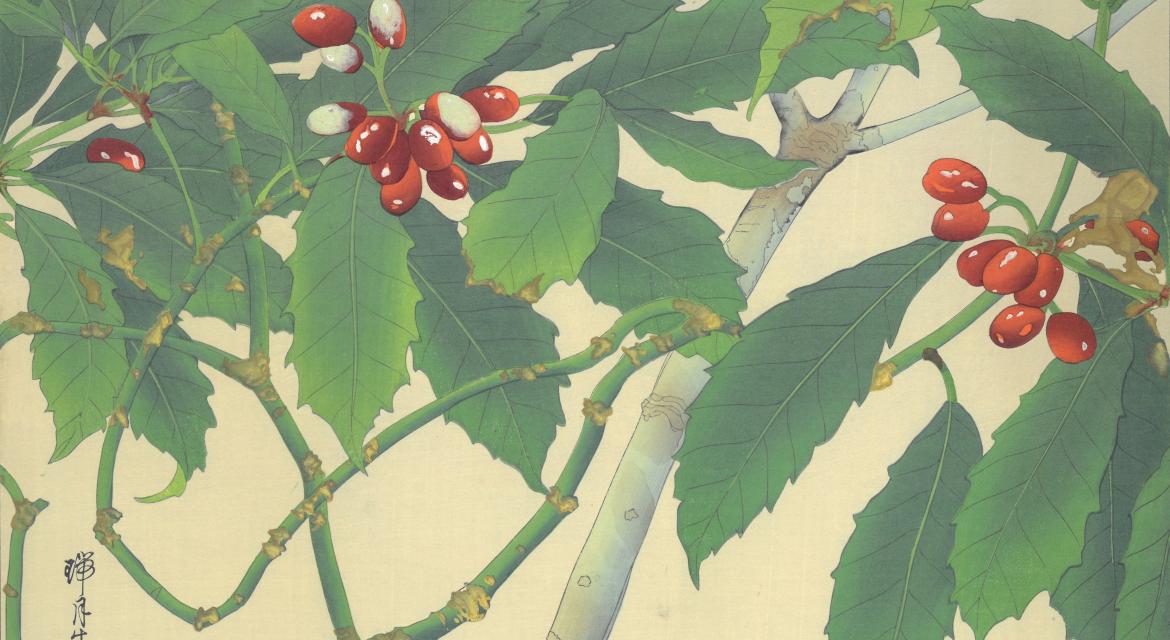
Polychrome woodblock print. 34,3 x 47,4 cm. M.C. 2022-116.
Paul Tavernier bequest, former Jean and Yvonne Tavernier Collection, 2022.
CCØ Paris Musées / Musée Cernuschi, musée des Arts de l’Asie de la Ville de Paris
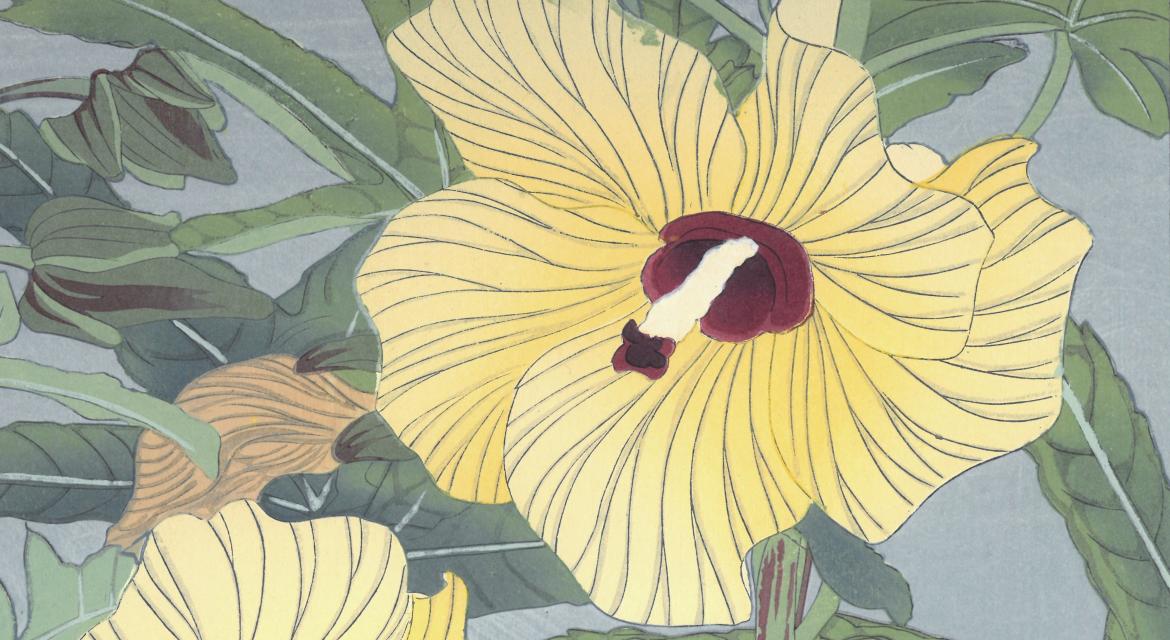
Polychrome woodblock print. 47,4 x 34,2 cm. M.C. 2022-115.
Paul Tavernier bequest, former Jean and Yvonne Tavernier Collection, 2022.
CCØ Paris Musées / Musée Cernuschi, musée des Arts de l’Asie de la Ville de Paris
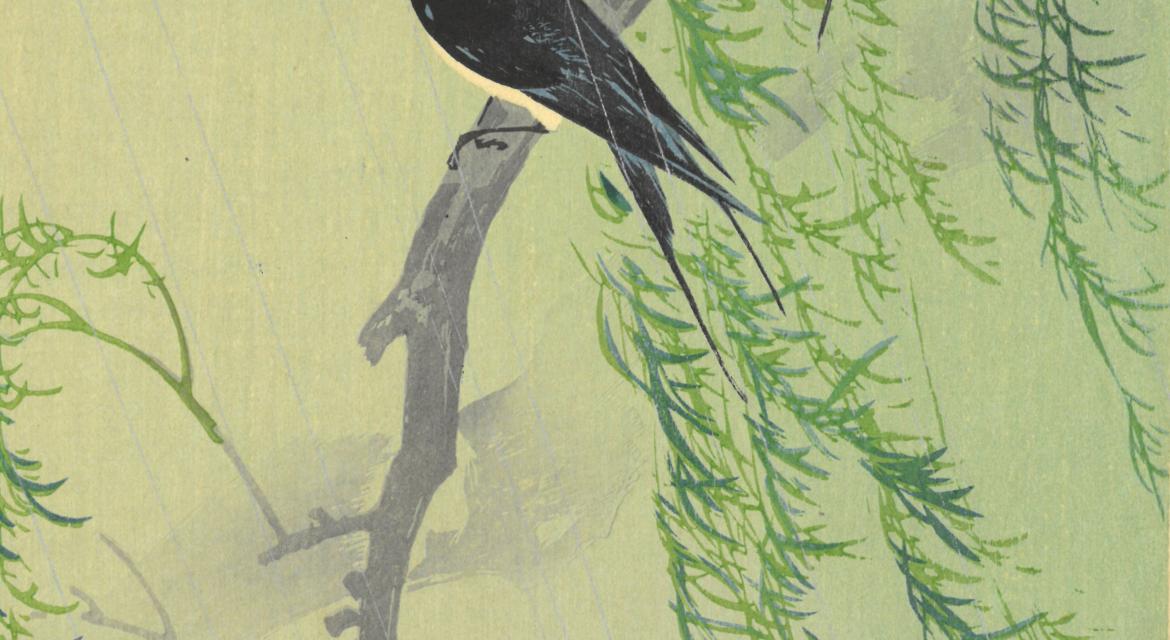
Polychrome woodblock print. 38,2 x 16,8 cm. M.C. 2022-110.
Paul Tavernier bequest, former Jean and Yvonne Tavernier Collection, 2022.
CCØ Paris Musées / Musée Cernuschi, musée des Arts de l’Asie de la Ville de Paris
Painting Japan: landscape prints
Landscapes constitute one of the most important subjects within the Shin hanga movement. Artists are no longer interested only in famous places, as the masters of the Edo period, but also depict their lived experience of a rural and traditional Japan. This aspect, sometimes idealized, particularly appeals to Western customers.
Some artists represented in the Tavernier collection were particularly distinguished in the landscape genre, such as Yoshida Hiroshi (1876-1950), Itō Shinsui (1898-1972) and Kawase Hasui (1883-1957) who are exhibited in the last section of the exhibition. These last two artists were designated “Living National Treasure” by the Japanese government, respectively in 1952 and 1956.
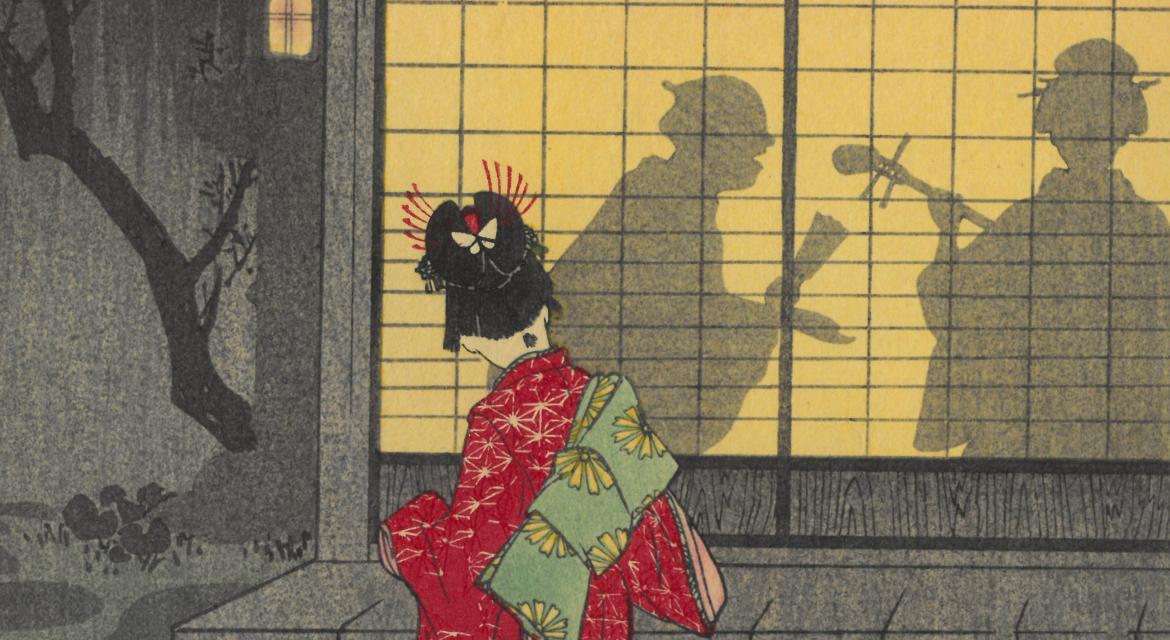
Polychrome woodblock print. 37,8 x 16,6 cm. M.C. 2022-142.
Paul Tavernier bequest, former Jean and Yvonne Tavernier Collection, 2022.
CCØ Paris Musées / Musée Cernuschi, musée des Arts de l’Asie de la Ville de Paris
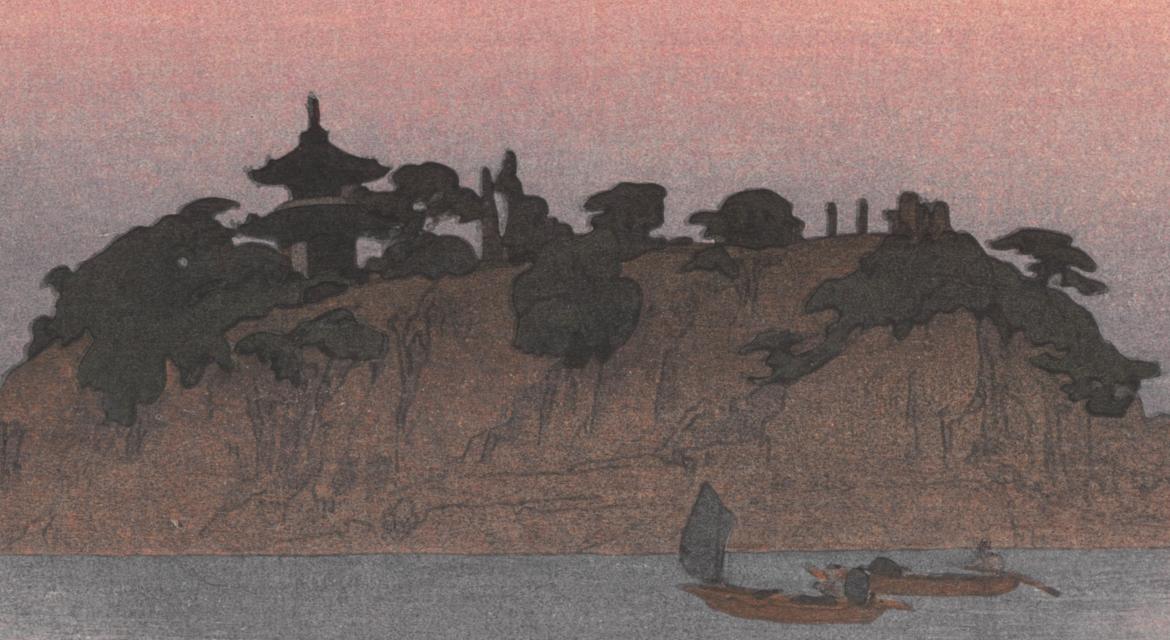
Polychrome woodblock print. 27,5 x 41,1 cm. M.C. 2022-129.
Paul Tavernier bequest, former Jean and Yvonne Tavernier Collection, 2022.
CCØ Paris Musées / Musée Cernuschi, musée des Arts de l’Asie de la Ville de Paris
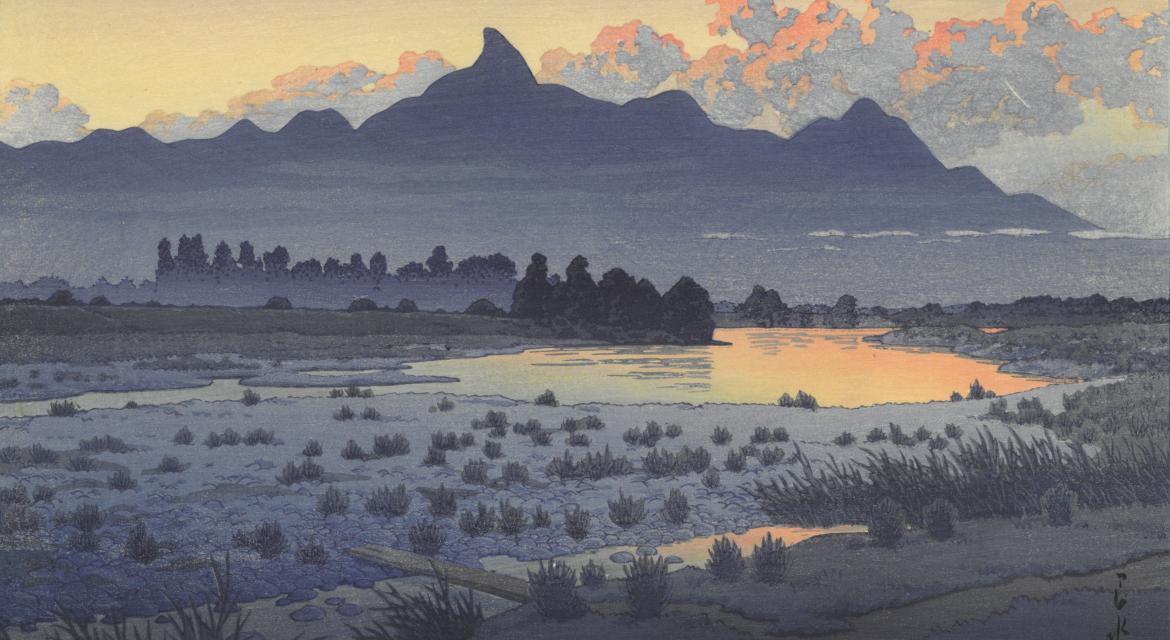
Polychrome woodblock print. 26 x 39 cm. M.C. 2022-151.
Paul Tavernier bequest, former Jean and Yvonne Tavernier Collection, 2022.
CCØ Paris Musées / Musée Cernuschi, musée des Arts de l’Asie de la Ville de Paris
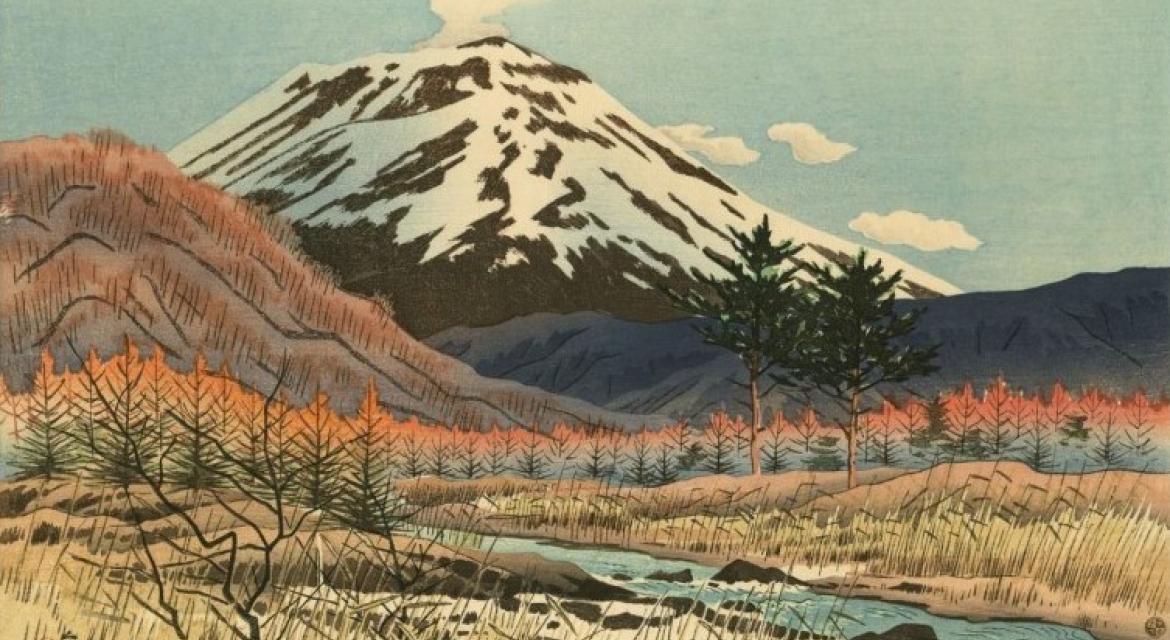
Polychrome woodblock print. 27,7 x 39 cm. M.C. 2021-10.
Purchase, 2021.
CCØ Paris Musées / Musée Cernuschi, musée des Arts de l’Asie de la Ville de Paris